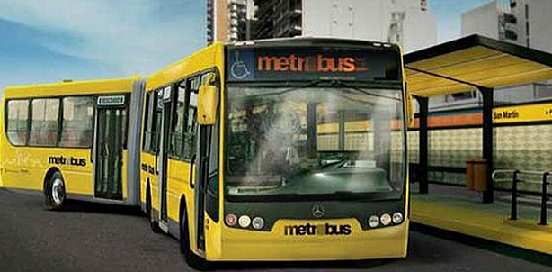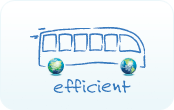 |
Argentina’s first Bus Rapid Transit system (BRT) was inaugurated by Mauricio Macri, the mayor of Buenos Aires, on 2nd June, marking its first day of operation. Government officials and the public speak of the tremendous impact this transit system will have in improving people’s lives.
The new BRT system, called "Metrobús" has 21 stations and physically separated lanes that run in the middle of the street. As an extra safety measure, the Metrobús has elevated station platforms and features countdown clocks that notify riders of the next arriving bus on each platform to keep riders informed.
|
|
The BRT will connect to two commuter rail stations on opposite sides of the city, forming a trip that takes 40% less time than before, ITDP reports. With the addition of the BRT to the city’s transport network, city officials expect the line to grow to an anticipated 100,000 daily riders, a 15 percent increase in ridership. City officials also expect the system to reduce fuel use by buses in the city by 30 percent, and therefore cut carbon emissions and improve air quality.
“The implementation of Metrobus in Buenos Aires, the first BRT corridor in Argentina, represents significant progress in the development of urban transportation, allowing for an increased quality of life of more than 100,000 people,” said Macri. “Our main goal, as those responsible for urban planning, is to restore the quality of public transportation, for which the support of the W.J. Clinton Foundation and ITDP has been crucial in the process of development and implementation of a world-class BRT system. In the coming years, based on the success of this first phase, we plan to continue the expansion of the BRT network in the City of Buenos Aires.”
“Road transportation accounts for 90% of all transportation emissions in Latin America, half of which are produced by passenger traffic,” said Stephen Crolius, director of the Transportation Program at the Clinton Climate Initiative. “Bus rapid transit systems play an important role in addressing those emissions as they create dedicated bus lanes across cities, providing millions of people with a more cost and time efficient solution to using cars—resulting in fewer emissions and improved air quality.”
The system was built in just seven months, “showing the huge savings that BRT provides in construction time, cost and logistics when compared to a fixed rail system,” ITDP explains. The BRT comes as only one component of Buenos Aires’s efforts in creating a comprehensive transit network to its residents and visitors. “In a remarkably short amount of time the City has helped improve conditions for walking downtown, dramatically increased the availability of high quality bike lanes, and provided a public bicycle system,” said Andrés Fingeret, director of ITDP’s Argentina office. “And now Metrobús will add another high quality transportation option that will get residents where they need to go, quickly, with less pollution and without getting stuck in traffic.”
Read More on CityFix |














